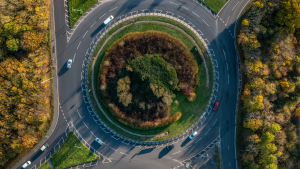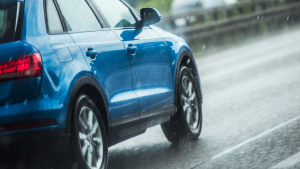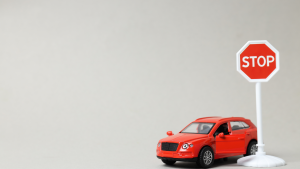Table of Contents
Road Markings And Traffic Signs
Having a sound knowledge of the Highway Code is an essential part of learning to drive. If you want to be successful in passing your test and gain some independence on the road, it’s really important that you are familiar with all the different road signs.
By getting to grips with what each sign means, you’ll not only increase your chances of success in the driving test, but you’ll also be well on your way to being a safer, more confident driver.
Of course, being familiar with the various road signs isn’t only important for new drivers, more experienced motorists should also remember to revise their road signs from time to time.
Let’s take a look at some of the most important road signs in Britain, to help you make sure that you’re up to speed with the meaning of the various shapes and symbols.
Speed signs
Perhaps one of the most important set of signs to become familiar with are those which warn you of the maximum speed limit in a particular zone.
Speed limit signs are almost always circular: many have a red outline and display the maximum limit in miles per hour. You must not go faster than the limit where these circular red bordered signs are to be found. Circular signs with a blue background suggest a minimum speed limit that applies and should be observed unless it is impractical to do so.
Often accompanying an image of a hazard such as a sign for a bend there will be a rectangular sign suggesting a speed limit. This will be an advisory limit. Judgement will inform whether this advisory limit is observed.
The other sign to watch out for is the white circular disk with a diagonal black line running from bottom left to top right: this means that the national speed limit applies of 60 mph on single carriageways, and 70mph on dual carriageways.
Speed signs are usually accompanied by road markings, reminding drivers of the speed limit, to reduce the risk of confusion, which may lead to accidents or speeding fines. Where there are street lights but no other signs to indicate the speed limit a 30mph limit applies (except on motorways).
Triangular signs
- Triangular signs are used to warn and will often feature an image to give you an idea of the nature of any potential danger ahead.
- Sharp bends, narrowings in the road and dangers such as pedestrians in the road or hidden dips are usually indicated by triangular signs.
- Red-edged triangular signs may also indicate problems with the road surface including loose chippings, increased risk of skidding, likelihood of ice in winter or falling rocks.
Signs featuring pictures of children or elderly and physically impaired people are likely to be placed near schools, nursing homes or any other place where drivers ought to take special care, as there is a higher than average risk that children might be playing in the road, or elderly people might be crossing.
Signs featuring animals such as deer or ponies may be placed near nature reserves, fields where animals graze and routinely escape, or in areas where horse riders are often found on the roads. Once again, these triangular signs are used to warn drivers of potential hazards.
Other, less common or obvious road signs often feature text to help clarify the nature of the danger. For example, in close proximity to a blind college, a sign similar to that warning of elderly people crossing may be displayed – however, the sign will often be accompanied by an additional sign reading ‘blind people crossing’ to help drivers understand exactly what to expect when faced with a hazard.
Similarly, a sign featuring children playing may be accompanied by a small panel reading ‘patrol’, indicating that at certain times of the day, traffic crossing officers may operate in the area concerned.
A blank upside down white triangle with a red edge, placed high up indicates that you are approaching a give way or stop sign. The sign will also include a white rectangular sign with text, to clarify the nature of the junction ahead.
The majority of images on triangular road signs are self-explanatory, and more puzzling or unusual signs are often supported by text. If in doubt, check your highway code or the government’s list of road signs for further information.
Circular signs
Circular road signs give orders. They come in two varieties:
- Pictures in a circular sign with a red trim typically indicate practices which are forbidden on a certain stretch of road. For example a picture of a bicycle in a red circular sign means that you must not cycle in this area.
- Pictures in a circular sign with a blue background give a mandatory instruction. So unlike the circular signs with a red border which tell us what we must not do the circular signs with a blue background tell us what we must do such as turn left ahead.
Rectangular signs
Rectangular signs inform. On primary routes (a network of roads of national importance such as “A” roads) these are usually bright green and will offer indications as to which roads to take to get to major destinations, as well as offering guidance on which lanes to follow and which exits to use on roundabouts.
At junctions and roundabouts, this information will often be backed up with road markings offering additional information on which lane to take. On the motorway, direction signs are normally blue. On non-primary routes the direction signs are usually white rectangles
While the wide range of road signs may seem daunting for a new driver, you will quickly become familiar with the different types of road-sign and the meaning of the road markings.
Keep revising your highway code after you’ve passed your test to ensure that this essential information is fresh in your mind, as this will help to make you a safer and more reliable driver for years to come.





